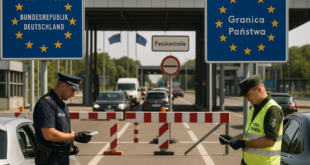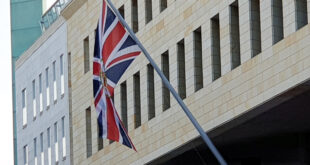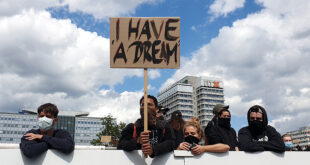Germany’s new crime statistics have shown a rise in violent crime, but fewer thefts and break-ins. During a Berlin press conference, Interior Minister Thomas de Maiziere was careful not to blame immigrants, reports Ben Knight.
Germany’s official crime statistics for 2016 have shown a rise in violent crime across the country – including among young male migrants. “There is no sugar coating here,” Interior Minister Thomas de Maiziere said at a crowded press conference in Berlin on Monday.
Violent crime increased by 6.7 per cent last year, rising to 193,542 cases from 181,386 cases in 2015. There was a similar increase in drug-related crime, which rose by 7.1 per cent to 302,594 cases in 2016. Perhaps more worryingly, the rise in weapons-related crime was more than double that – up 14.8 percent to 34,443 cases. Nevertheless, the overall statistics showed only a slight increase in crime – up by just 0.7 per cent from 2015 to 2016 – or 6.37 million cases in total, and there was a notable drop of 4.4 per cent in the rate of theft.
The reported rates of assault, murder, manslaughter and rape all went up last year in Germany. De Maiziere described the developments as worrying, and blamed it on an overall “coarsening” in society. He pointedly refused to blame last year’s influx of refugees – or any particular group – on the problem, and said the statistics bore him out. “We are dealing with a rise in hate, lack of respect and violence in general,” the minister told reporters. “We would not reduce that to any particular group – whether left, right, or foreigners.”
Crime among asylum-seekers
Nevertheless, one statistic stuck out in the report – while police had registered only 114,000 criminal incidents among asylum-seekers and refugees in 2015 – there were 174,000 in 2016. “Among the violent crimes, there were 1 per cent more Germans, but 90 per cent more migrant suspects,” de Maiziere said – before adding that many of these crimes took place among the asylum-seekers themselves inside shelters.
For that reason, Saxony Interior Minister Markus Ulbig, who was also at Monday’s press conference in his capacity as chairman of the Council of State Interior Ministers, said he expected that figure to sink again as asylum-seekers were moved out of mass shelters.
Ulbig also pointed out that many of the crimes among asylum-seekers were being carried out by repeat offenders – in Saxony, for instance, 1 per cent of migrants are responsible for 40 per cent of the crimes committed by migrants. Not only that, Syrians – who de Maiziere described as a group “truly in need of protection” – were much less likely to commit crimes than people from other countries.
Rise in extremist activity – though not violence
Other figures released by the police on Monday showed an increase in politically-motivated extremist crime. As ever, the far-right accounted for the biggest portion of these – some 23,555 incidents out of a total of 41,549 – but there was also a massive increase in politically-motivated crimes carried out by non-Germans: some 3,372 cases – up from 2,025 cases in 2015, which represented a 66.5 per cent rise.
The largest proportion of these crimes (33.5 per cent) was propaganda-related – usually the public use of banned symbols relating to organizations deemed a threat to the German constitution. Indeed, the number of violent political crimes actually dropped overall – if only slightly: from 4,402 in 2015 to 4,311 in 2016. Nevertheless, the overall trend of political violence in Germany in recent years has been a steady rise – the number of incidents was well under 3,000 in 2012.
Altogether, 14 people were killed last year in Germany as a result of what the police classified as politically-motivated extremism: 12 of these at the attack on the Berlin Christmas market in December.
At the same time, last year saw another rise in hate crime in Germany – particularly against foreigners. Anti-Semitic incidents climbed by some 7.5 per cent (from 1,366 to 1,468). Nevertheless, there was a small drop in the number of attacks on asylum-seekers’ homes.
© Deutsche Welle
 THE AFRICAN COURIER. Reporting Africa and its Diaspora! The African Courier is an international magazine published in Germany to report on Africa and the Diaspora African experience. The first issue of the bimonthly magazine appeared on the newsstands on 15 February 1998. The African Courier is a communication forum for European-African political, economic and cultural exchanges, and a voice for Africa in Europe.
THE AFRICAN COURIER. Reporting Africa and its Diaspora! The African Courier is an international magazine published in Germany to report on Africa and the Diaspora African experience. The first issue of the bimonthly magazine appeared on the newsstands on 15 February 1998. The African Courier is a communication forum for European-African political, economic and cultural exchanges, and a voice for Africa in Europe.
































